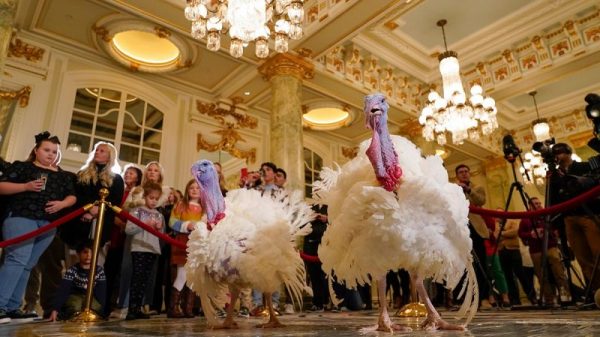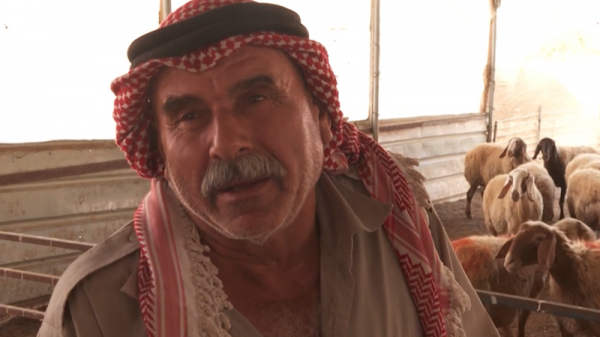Since I became a climate reporter — and then a new dad — bedtime stories are different now.
Coming home from flood or drought, wildfire or research lab there awaits a four-year old named River who loves story time almost as much as he loves animals. Armadillos, giraffes and humpback whales are the current top three, but when picking a name for his tee-ball team, he suggested the Brooklyn Cockatoos.
While I can’t yet bring myself to tell him how many of his favorites are endangered — or how his worried dad has been collecting practical ways to survive and thrive amid so much loss and change — I can at least update his animal fables to fit the times.
“Once upon a time, there was a camel,” I begin, after settling into the night-night chair and flipping to a picture of his old man after a ride around the Great Pyramids of Giza. I point out the splayed toes perfect for walking on sand, and eyelids seemingly custom-made to see through a sandstorm. “It looks like they were born to live in hot places, doesn’t it?”
River nods.
“Wrong!” I blurt with the zeal of discovery. “The camel is actually from Canada! Like your mom!”
I explain how fossils now show that for 40 million years, the so-called “ships of the desert” were ambling over beaver dams, nibbling through boreal forests and dodging bears across North America, until a train of dromedaries wandered west over the Bering land bridge around 17,000 years ago. Somewhere along the genetic line, camels’ ancestors discovered a big hump of fat used to get through cold winters can also help cross big, hot deserts.
Camel fur turns out to be a decent sunscreen that helps with thermal regulation, those snowshoe feet perform well in sand while triple eyelids evolved in countless blizzards also work in Sudanese haboobs.
But these accidental advantages were just the beginning. Camels got better at closing their noses to keep out sand and lock in moisture. They learned to drink saltwater, eat toxic plants and position their bodies in the coolest possible angles to the sun.
Camels changed everything — anatomy, physiology and behavior — to fit into their hot new climate.
But while they had eons to adjust, one generational tweak at a time, record-shattering heat is sending millions of species of plants and animals in search of more comfortable latitudes and elevations, some at speeds fast enough to challenge the definition of “invasive species.”
And to get my most poignant lesson in heat adaptation, I had to trade desert gear for a snowsuit, sail to the bottom of the world and hang out with penguins.
“They were everywhere,” I told River after returning from a reporting trip to the Antarctic Peninsula. He is happiest with nose pressed to the penguin house glass at the Central Park Zoo, so the kid sat rapt as I showed him my pics of a gentoo father diligently building a nest with his beak, one rock at a time.
But then I had to figure out a way to tell him none of these babies would survive.
Penguins need relatively dry, bare rock to nest, and after a warmer, wetter Antarctic summer dumped enough rain and snow to delay nesting season by a month, the new gentoos I’d met simply wouldn’t have enough time to grow the feathers and fat needed to swim and fish the Southern Ocean over winter.
But before I could mourn them for long, I learned the birds gathering rocks for worthless nests are the one species that happen to be surprisingly crushing Darwin’s survival-of-the-fittest test.
“Gentoo penguins are big climate change winners in the Antarctic,” Heather Lynch told me. As the endowed chair for ecology and evolution at Stony Brook University, her team had spent recent years watching as chinstrap and Adélie penguins remained committed to ancient nesting spots, fruitlessly trying to hatch eggs in standing water with populations crashing as a result.
Conversely, the more flexible gentoo penguins keep moving farther and farther south, chasing new prey, and even abandoning nests to increase the odds of long-term survival. As a result, gentoo population numbers have exploded by as much as 30,000% in just a few years.
“I think there’s a lesson in here for us as well,” Heather Lynch said. “If we just stick to what we’ve always done, it’s not going to turn out well for us. Just because Manhattan has always been where it is, does it make sense that it will be there in two hundred or three hundred years? I don’t know. But I think we would benefit from being flexible and adaptive. And I think that’s kind of what the gentoos are telling us.”
Here lieth the lesson of the camel and the gentoo: Heat will move us, one way or another. An overheated atmosphere and the resulting flood, drought, and storm will rearrange life on Earth, and those who can’t move like the gentoo will have to adapt like the camel.
As northern climates way up on the 50th parallel now experience the kind of temperatures once reserved for the tropics, folks from British Columbia to Yorkshire, England, suddenly understand why smart Arizonans keep oven mitts in the car. And those in already-scorching places like Phoenix will have to start thinking about temperature management and water conservation like the Fremen of Dune.
Sales of air-conditioned shirts and day- or weeklong heatstroke insurance policies are booming in Japan. Seville, Spain, became the first city to start naming heat waves like hurricanes, and after they appointed a chief heat officer, Miami, Los Angeles and Phoenix soon followed suit.
As our kids get older, our cities will get brighter.
While locals in places like Mykonos have been painting houses white for centuries, Los Angeles painted a million square feet of its heat-trapping asphalt with reflective paint. And Purdue professor Xiulin Ruan and his students supercharged the idea and discovered ways to make a white so brilliant, it can reflect up to 98 percent of sunlight back into deep space and keep a surface up to 19 degrees Fahrenheit cooler than its surroundings.
Seville is also reviving the use of qanats and windcatchers, 1,000-year-old Persian inventions that vent enough cool air from underground canals to lower the temperature of baking streets by 10 to 15 degrees. This $5 million investment, along with a “policy of shade” to extend awnings, tree plantings and drop-in cooling centers, is part of a specific campaign to save the cultural treasure known as charla al fresco — that delicious moment after sunset when grandmothers can pull their chairs together in courtyards for a “cool chat.”
But maybe the best test to see if Homo sapiens are as savvy as camels and gentoo penguins is whether we use technology that already exists on store shelves to cool more efficiently, at a lower cost and with less pollution and grid-crashing demand for peaker-plant power.
In 2018, the International Energy Agency found fans and air conditioners make up 20% of the total electricity used by buildings around the world, but not a single nation places minimum energy performance standards on cooling equipment that beat the efficiency of today’s readily available technology.
“Don’t let the cold out!” my dad would bellow as I left the door wide open in an urgent need to play, but both of us were clueless that our dumb energy hog was already working harder because most American air conditioners lacked a common part with the unsexy name of “inverter.” We could control the fan speed on window units, swamp coolers, and split systems back in the day, but the cooling compressor had only two settings—on and off. An inverter AC adjusts compressor speeds according to temperature and humidity, making the machine quieter and faster to cool while using 30–50% less juice.
While 90% of Americans enjoy air conditioning, they are outnumbered seven-to-one by people in the Global South who do not. But much the way they leapfrogged landlines with cell phones, the smartest developing markets are leaving the past in the past. The market share of inverter ACs in China exploded from 9% to 65% in a decade, thanks to government incentives and public affection, while in India, inverters were in 85% of the machines sold in 2022.
And then there is the heat pump.
They’ve been around since the 1850s, but if you had quizzed me for a definition over most of my life, I would have guessed it is a dance from the seventies. Who would ever consider such a thing when in sweaty need of home cooling? But it turns out that an air conditioner is — get this — a heat pump! It just pumps it in one direction, from inside to out, the same way our refrigerator pulls the heat away from our groceries. But a heat pump goes both ways and even in subzero extremes can find enough warm air outside to keep things toasty inside at up to five times the efficiency of an electric radiator.
In 2023, only 16% of US homes had heat pumps, but with state and federal incentives helping cover the upfront costs, Maine blew past a goal to install 100,000 of them by 2025 two years early and are now shooting for another 175,000 by 2027. And nationally, heat pumps just outsold gas furnaces for the second year in a row.
Homo sapiens may not have the thousands of years needed to change our anatomy and physiology, but what about the psychology and technology it will take to build a heat-resistant world?
Can we do it fairly? And can we do it in time?
As for the bedtime parable of the camel and the gentoo, I’m still working out the ending. I just know River won’t be satisfied without a magic plot twist that somehow saves all creatures great and small.







































